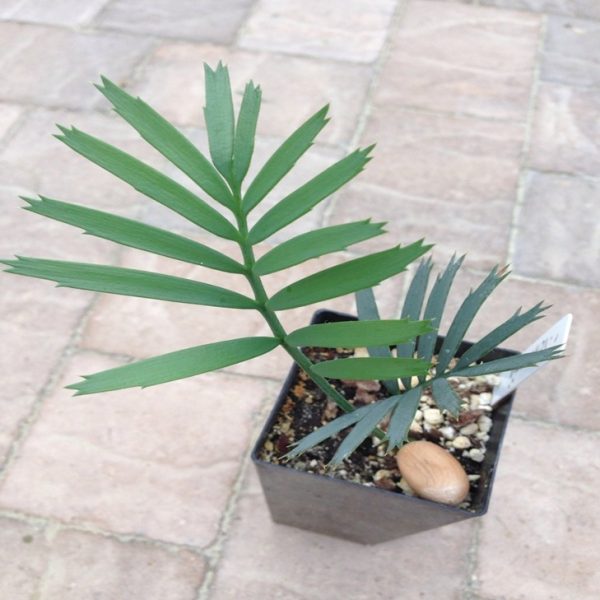Whatapp:
+278.3675.0634
Work Hours
Monday to Friday: 7AM - 7PM
Weekend: 10AM - 5PM

Original price was: $40.00.$35.00Current price is: $35.00.
Encephalartos lehmannii seedlings are young plants of a drought-resistant cycad species native to South Africa
Encephalartos lehmannii seedlings are young plants of a drought-resistant cycad species native to South Africa, known for its striking blue-grey foliage and adaptability to warm temperate and subtropical climates. The seeds of Encephalartos lehmannii are deep red, about 4.5-7.5 cm long including the fleshy aril, and coning (seed production) occurs every two years if there is sufficient rain.
Light: Require bright, direct sunlight (about 6 hours daily)
Temperature : Thrive in moderate, warm subtropical temperatures around 25°C and can tolerate light frost
Watering: Water sparingly; allow the soil to dry almost completely between waterings to prevent root rot
Soil: Prefer sandy, well-draining soil with a slightly acidic to neutral pH (around 6.5)
Humidity: Moderate humidity (around 50%) is suitable (encephalartos lehmannii Seedling)
Propagation: Seedlings arise from sowing seeds in well-draining soil kept in a warm, bright location. Offsets can also be used for propagation once they develop roots
Seedlings often form clusters of 8–10 plants due to suckering
Young leaves are bluish-grey and glaucous with well-spaced leaflets, sometimes with small marginal spines or lobed leaflets depending on the form. (encephalartos lehmannii Seedling)
Avoid overwatering to prevent root rot.
Provide good ventilation and avoid waterlogged conditions.
Fertilize sparingly with a balanced fertilizer (N-P-K 10-10-10) every two months during active growth
Repot every 2-3 years or when the seedling outgrows its pot, using a pot with good drainage
Encephalartos lehmannii seedlings are slow-growing but hardy, making them excellent for ornamental use in gardens with suitable climates or as tubbed specimens
In summary, to successfully grow Encephalartos lehmannii seedlings, provide bright sunlight, well-draining sandy soil, moderate warmth, and careful watering with attention to drainage and drought tolerance. Seeds are red and relatively large, and seedlings may cluster naturally as they grow (encephalartos lehmannii Seedling)
Reviews
There are no reviews yet.